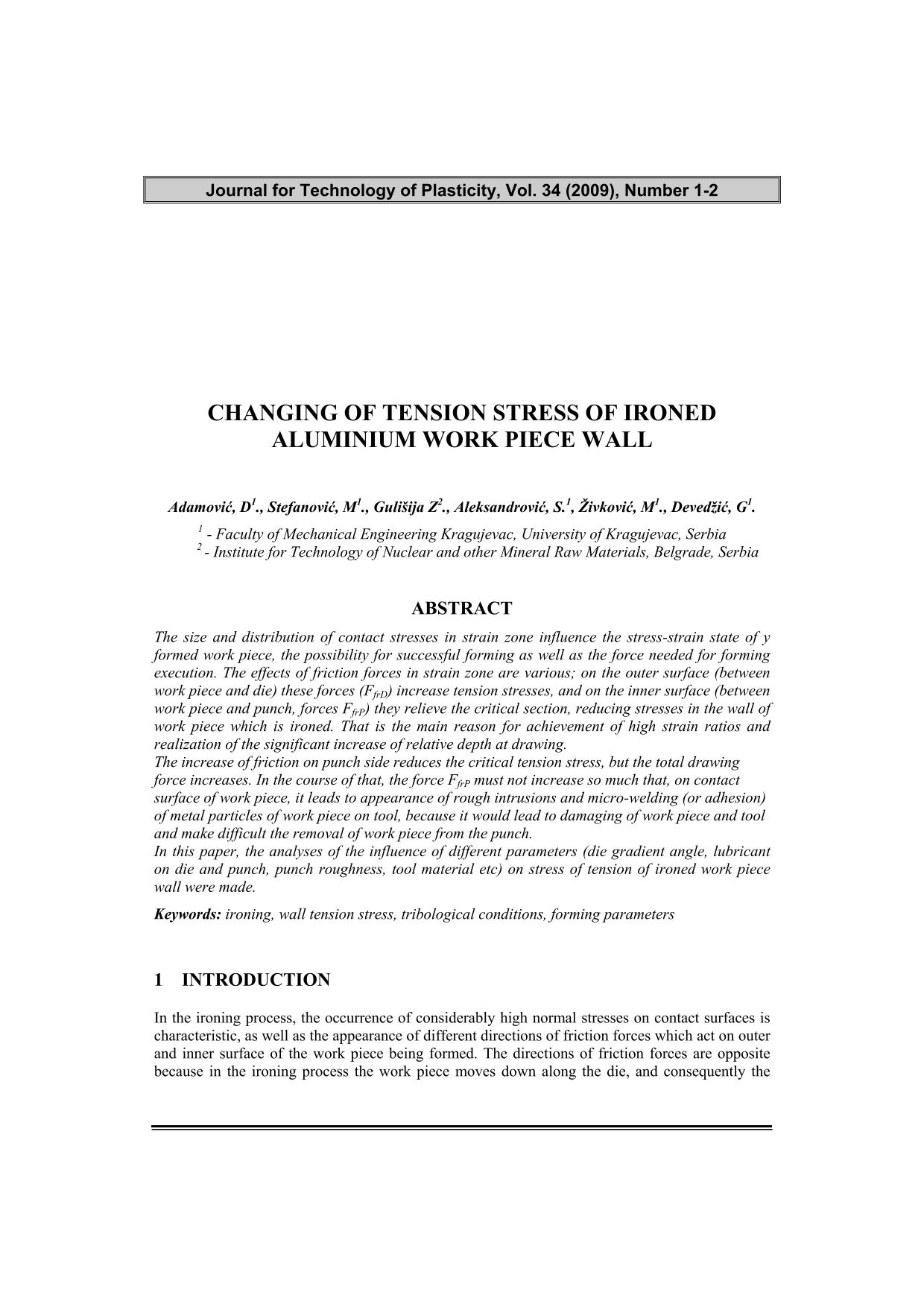
Published 2009-12-25
abstract views: 7 // Full text article (PDF): 4
Keywords
- ironing,
- wall tension stress,
- tribological conditions,
- forming parameters
How to Cite

This work is licensed under a Creative Commons Attribution 4.0 International License.
Abstract
The size and distribution of contact stresses in strain zone influence the stress-strain state of y formed work piece, the possibility for successful forming as well as the force needed for forming execution. The effects of friction forces in strain zone are various; on the outer surface (between work piece and die) these forces (FfrD) increase tension stresses, and on the inner surface (between work piece and punch, forces FfrP) they relieve the critical section, reducing stresses in the wall of work piece which is ironed. That is the main reason for achievement of high strain ratios and realization of the significant increase of relative depth at drawing. The increase of friction on punch side reduces the critical tension stress, but the total drawing force increases. In the course of that, the force FfrP must not increase so much that, on contact surface of work piece, it leads to appearance of rough intrusions and micro-welding (or adhesion) of metal particles of work piece on tool, because it would lead to damaging of work piece and tool and make difficult the removal of work piece from the punch. In this paper, the analyses of the influence of different parameters (die gradient angle, lubricant on die and punch, punch roughness, tool material etc) on stress of tension of ironed work piece wall were made.

